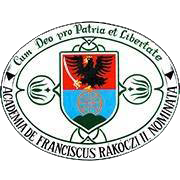Please use this identifier to cite or link to this item:
https://dspace.kmf.uz.ua/jspui/handle/123456789/3334Full metadata record
| DC Field | Value | Language |
|---|---|---|
| dc.contributor.author | Natalia Varadi | en |
| dc.contributor.author | Váradi Natália | hu |
| dc.contributor.author | Вароді Наталія | uk |
| dc.date.accessioned | 2024-02-09T15:48:03Z | - |
| dc.date.available | 2024-02-09T15:48:03Z | - |
| dc.date.issued | 2022 | - |
| dc.identifier.citation | In Вчені записки Таврійського національного університету імені В.І. Вернадського. Серія: Історичні науки. 2022. Том 33 (72) № 1. c. 8-13. | en |
| dc.identifier.issn | 2663-5984 (Print) | - |
| dc.identifier.issn | 2663-5992 (Online) | - |
| dc.identifier.other | DOI: https://doi.org/10.32838/2663-5984/2022/1.2 | - |
| dc.identifier.uri | https://dspace.kmf.uz.ua/jspui/handle/123456789/3334 | - |
| dc.description.abstract | Abstract. Transcarpathia had been economically integrated into the Soviet system since 1946 and became part of the Ukrainian national economy. Plan-based management was implemented in all areas of agriculture and industry. The area was of strategic importance in terms of transport from east to west, it was considered a “western gate”. A significant part of the electricity, gas and oil exports to Europe flowed through the region. The Mir electricity transmission line, the Druzhba, the Soyuz, and the Urengoy – Pomary – Uzhgorod pipelines were also situated in the region. The Chop-Batevo area became an important transhipment area for the transport of goods, where significant freight traffic was handled on the railway with a wide and narrow gauge and a transhipment station. The article is mainly based on new data, documents form the Transcarpathian Regional State Archives and evaluates the industrial and commercial characteristics of Transcarpathia in the Khrushchev era (1953–1964). Due to its geopolitical situation, Transcarpathia received significant attention from Soviet leaders. It is possible to make such conclusions. During the Khrushchev era, the food and light industry started to develop. Different types of Transcarpathian wines, Uzhgorod cognac, canned vegetables and various bottled mineral water were in strong demand in the huge market of the Soviet Union. The milling industry also developed, mainly because the Soviet troops stationed in Central Europe were supplied from Transcarpathia. Lots of shops, cafes, bakeries, repair shops, restaurants etc. were opened. The unemployment decreased; the trade developed. Among the main goals of the Transcarpathian political leadership were establishing and deepening friendly relations and co-operation with neighbouring countries, developing tourism and infrastructure, reducing housing shortages, developing urban industries, which entailed the acceleration of urbanization processes. | en |
| dc.description.abstract | Резюме. Із 1946 р. Закарпаття було економічно інтегроване до радянської системи і стало органічною складовою частиною народного господарства України. В усіх галузях сільського господарства та промисловості впроваджувалося планове управління. Район мав стратегічне значення з погляду транспортного сполучення між сходом і заходом, його вважали «західними воротами». Значна частина експорту електроенергії, газу й нафти до Європи проходила через цю місцевість. Також на території області були розташовані ЛЕП «Мир», нафтопроводи «Дружба», «Союз», «Уренгой – Помари – Ужгород». Важливим проміжним районом для перевезення вантажів став Чоп – Батево, де значні вантажні перевезення обслуговувала залізниця із широкою та вузькою коліями та перевантажувальною станцією. У статті, котра переважно базується на нових даних, документах Закарпатського обласного державного архіву, оцінюються промислово-торговельні характеристики Закарпаття протягом хрущовської доби (1953–1964). Завдяки своєму геополітичному становищу Закарпаття привертало значну увагу радянських керівників. Можна зробити такі висновки. За часів Хрущова почали розвиватися харчова та легка промисловість. На величезному ринку Радянського Союзу користувалися великим попитом різні види закарпатських вин, ужгородський коньяк, овочеві консерви та різноманітна бутильована мінеральна вода. Розвивалася і млинарна промисловість, передусім тому, що радянські війська, котрі перебували у Центральній Європі, постачалися з Закарпаття. Було відкрито багато магазинів, кафе, пекарень, ремонтних майстерень, ресторанів тощо. Знизився рівень безробіття; розвивалася торгівля. Серед основних цілей політичного керівництва Закарпаття були налагодження та поглиблення дружніх відносин і співпраці із сусідніми країнами, розвиток туризму й інфраструктури, зменшення дефіциту житла, розвиток міської промисловості, що сприяло прискоренню урбанізації. | uk |
| dc.language.iso | en | en |
| dc.publisher | Видавничий дім «Гельветика» | en |
| dc.relation.ispartofseries | Серія: Історичні науки;Том 33 (72) № 1. | - |
| dc.rights | Attribution-NonCommercial-NoDerivs 3.0 United States | * |
| dc.rights.uri | http://creativecommons.org/licenses/by-nc-nd/3.0/us/ | * |
| dc.subject | food industry | en |
| dc.subject | light industry | en |
| dc.subject | trade | en |
| dc.subject | Transcarpathia of 1953-1964 | en |
| dc.subject | plan-based economy | en |
| dc.title | Industrial and Commercial Characteristics of Transcarpathia in the Khrushchev Era (1953–1964) | en |
| dc.title.alternative | Характеристика промисловості й торгівлі Закарпаття у добу Хрущова (1953–1964) | en |
| dc.type | dc.type.researchStudy | en |
| Appears in Collections: | Váradi Natália | |
Files in This Item:
| File | Description | Size | Format | |
|---|---|---|---|---|
| Varadi_Natalia_Industrial_and_Commercial_Characteristics_of_Transcarpathia_in_the_Khrushchev_Era_2022.pdf | In Вчені записки Таврійського національного університету імені В.І. Вернадського. Серія: Історичні науки. 2022. Том 33 (72) № 1. c. 8-13. | 254.92 kB | Adobe PDF | View/Open |
This item is licensed under a Creative Commons License





